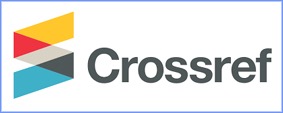Analisis Kesalahan Penulisan Fonologi Bahasa Jawa Pada Lirik Lagu Satru 2 Karya Denny Caknan
DOI:
https://doi.org/10.29240/estetik.v5i2.4757Keywords:
Error, Javanese Phonology, Satru Song 2Abstract
Language errors are often not realized by readers and song lyricists on Youtube. This is because not all media users understand the rules of writing Javanese language properly and correctly. This study aims to analyze errors in Javanese writing in the lyrics of The Satru 2 song by Denny Caknan on the Denny Caknan youtube account channel uploaded in February 2022.this study uses qualitative descriptive research methods. In this study, the data sources used came from primary and secondary data sources. The primary data source is the lyrics of the song Satru 2 by Denny Caknan on Denny Caknan's Youtube channel, while the source of the skunder data is in the form of documentation taken from various books, articles, and journals with similar discussions. In this study, it used a note-taking technique, namely by listening to Youtube by recording lyrics and errors in writing Javanese. The results of the study, it can be concluded that there was a phonological writing error in writing the lyrics of the song Satru 2 by Denny Caknan. There are five vowel words out of five sentences of incorrect writing, namely in the words wis, believe, what, trima, and work. Most javanese phonology on vowel phoneme errors that should be [a] written [o].
Downloads
References
Anggito Alibii & Johan Setiawan. (2018). Metodologi Penelitian Kualitatif. CV Jejak.
Azwardi. (2018). Metode Penelitian Pendidikan Bahasa dan Sastra Indonesia. Syiah Kuala Universitas Press.
Dwi Lestari, A. (2013). ANALISIS KESALAHAN ORTOGRAFI PADA KARANGAN BERBAHASA JAWA RAGAM KRAMA SISWA KELAS X TKR A SMK YPT PURWOREJO. 03(03), 29–34.
Endraswara, S. (2006). Metode, Teori, Teknik Penelitian Kebudayaan: Ideologi, Epistemologi, dan Aplikasi. Pustaka Widyatama.
Handayani, A. D., & Dhamina, S. I. (2021). Analisis Kesalahan Berbahasa Jawa Ranah Fonologis dalam Media Informasi Daring “Setenpo.†Jurnal Diwangkara, 1(1), 1–6. https://jurnal.lppmstkipponorogo.ac.id/index.php/DIWANGKARA/issue/view/12
Kementerian Pendidikan dan Kebudayaan. (2018). Kamus Besar Bahasa Indonesia (V). Balai Pustaka.
Muslimah, N., Ipa, X. I., & Dalam, P. (2014). Analisis Kesalahan Ortografi dalam Karangan Narasi Berbahasa Jawa Siswa Kelas XI di SMA N 6 Purworejo Tahun Pelajaran 2012 / 2013. 01, 14–19.
Sugiyono. (2013). Kualitatif, dan R&D. In Bandung: Alfabeta. Alfabeta.
Supriani, R., & Siregar, I. R. (n.d.). Penelitian analisis kesalahan berbahasa. 67–76.
Yuliani, W. (2018). Metode Penelitian Deskriptif Kualitatif dalam Perspektif Bimbingan Konseling. Jurnal Quanta, 2(2), 83–91.
Zen, A. L. (2016). Perubahan fonologis kosakata serapan sansekerta dalam bahasa jawa. Universitas Diponegoro Semarang.
Zulaeha, I., & Baehaqie, I. (2018). Pemakaian Fonologi dan Leksikon Bahasa Jawa: Studi Sosiodialektologi Di Kabupaten Batang. Jurnal Sastra Indonesia, 7(1), 7–9.
Downloads
Published
How to Cite
Issue
Section
Citation Check
License
Authors who publish with ESTETIK : Jurnal Bahasa Indonesia agree to the following terms:
- Authors retain copyright and grant the journal right of first publication with the work simultaneously licensed under a Creative Commons Attribution-NonCommercial-ShareAlike 4.0 International License (CC BY-NC-SA 4.0) that allows others to share the work with an acknowledgment of the work's authorship and initial publication in this journal.
- Authors are able to enter into separate, additional contractual arrangements for the non-exclusive distribution of the journal's published version of the work (e.g., post it to an institutional repository or publish it in a book), with an acknowledgment of its initial publication in this journal.
- Authors are permitted and encouraged to post their work online (e.g., in institutional repositories or on their website) prior to and during the submission process, as it can lead to productive exchanges, as well as earlier and greater citation of published work (See The Effect of Open Access).






